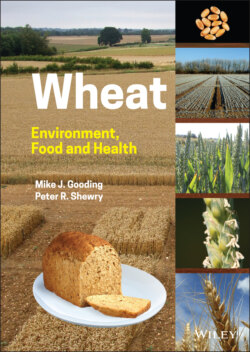Читать книгу Wheat - Peter R. Shewry - Страница 21
1.2.2 Reproductive Phase
ОглавлениеThe reproductive stages commence when the stem apex or growing point starts producing the structures of the ear (or spike). The timing of this transition is strongly dependent on wheat genotype and the environment. Of particular relevance are the interactions between genetic factors, temperature, and day length (or photoperiod), i.e. cultivars vary greatly in their need to pass through a cold period (i.e. to become vernalised), and for days to lengthen. These interactions are detailed in Chapter 4, but for now it suffices to recognise that those cultivars that have a significant requirement to pass through a cold period for timely transition to the reproductive phase and hence to maturation are classed as winter wheats (as in Figure 1.6, Table 1.3). Those that have little such requirement are classed as spring wheats. Facultative wheats are intermediate between winter and spring wheats in their requirement for vernalization (Braun and Sãulescu 2002). Those cultivars that do or do not have a strong requirement for days to lengthen for timely development are respectively classed as day length sensitive and day length insensitive cultivars (Table 1.3).
Figure 1.10 The tiller production phase of wheat. Boxed numeral is the decimal growth stage score from Table 1.4.
